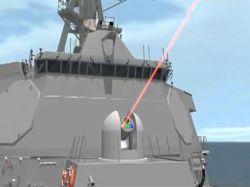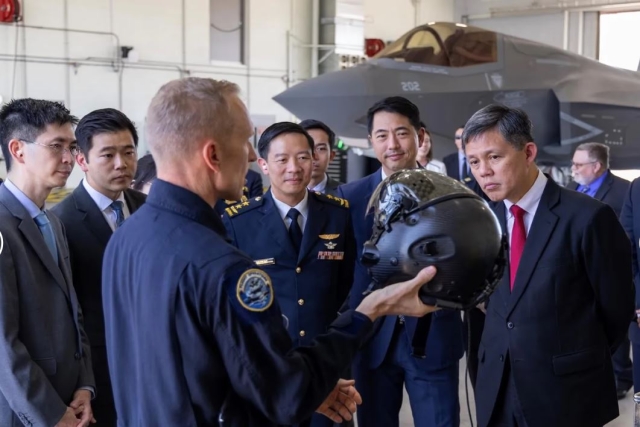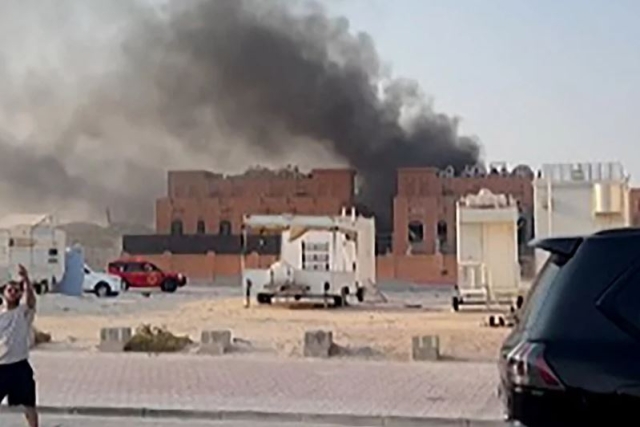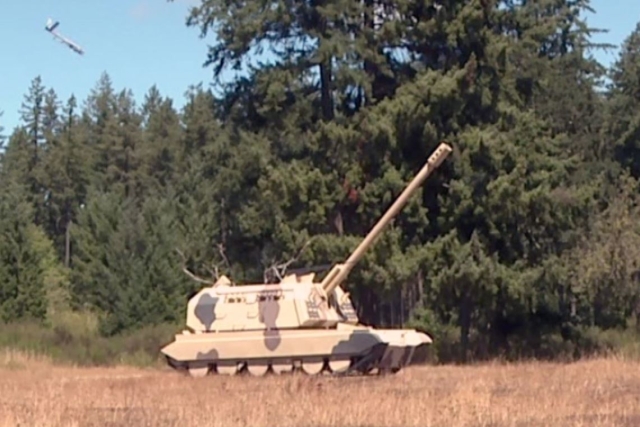US Laser Weapons Inch Closer To Deployment

The US Navy will outfit the USS Ponce, an amphibious vessel with a Laser Weapon System (LaWS) and will begin sea testing in the Persian Gulf later this year heralding an era of practical laser weapons which may ultimately replace short range cannons and missiles.
After it completes testing it should be capable of shooting down drones or disabling small attack boats at an energy cost of just $1 per shot.Rather fittingly for a futuristic weapons system, LaWS will be fired using a “video game-like controller”, Reuters reported in April.
The U.S. military is investing heavily into the development of weapons straight out of Star Wars. The US Navy announced in April that it is moving ahead with plans to deploy the first ever combat laser weapon and US Navy engineers are also said to be making final adjustments to a laser weapon prototype.
"This is a revolutionary capability," said Chief of Naval Research Rear Adm. Matthew Klunder. "It's absolutely critical that we get this out to sea with our Sailors for these trials, because this very affordable technology is going to change the way we fight and save lives.", according a US Navy press release in April this year.
Companies such as Lockheed Martin, Raytheon and Boeing lead the laser development fray with a number of successful programs.
Earlier this month, Lockheed Martin, in partnership with the US Air Force Research Laboratory (AFRL) and the University of Notre Dame, demonstrated the airworthiness of a new beam control turret being developed for the Defense Advanced Research Projects Agency (DARPA) and AFRL to give 360-degree coverage for high-energy laser weapons operating on military aircraft.
A research aircraft equipped with the Aero-adaptive Aero-optic Beam Control (ABC) turret conducted eight flights in Michigan. "These initial flight tests validate the performance of our ABC turret design, which is an enabler for integrating high energy lasers on military aircraft," said Doug Graham, vice president of advanced programs, Strategic and Missile Defense Systems, Lockheed Martin Space Systems.
The ABC turret system is designed to allow high-energy lasers to engage enemy aircraft and missiles above, below and behind the aircraft.
The US Defense Advanced Research Projects Agency (DARPA) announced in August that its Electronic-Photonic Heterogeneous Integration (E-PHI) program has successfully integrated billions of light-emitting dots on silicon to create an efficient silicon-based laser.
The breakthrough, achieved by researchers working on the program at the University of California, Santa Barbara (UCSB), will enable the production of inexpensive and robust microsystems that exceed the performance capabilities of current technologies. Defense systems, such as radar, communications, imaging and sensing payloads rely on a wide variety of microsystems devices.
DARPA started the E-PHI program in 2011 with a goal of integrating chip-scale photonic microsystems with high-speed electronics directly on a single silicon microchip.
Although many photonic components can now be fabricated directly on silicon, realizing an efficient laser source on silicon has proven to be very difficult. Traditional approaches to adding lasers – and by extension, gain material – on-chip include separately fabricating lasers on expensive wafers, which then have to be bonded onto silicon chips.
Meanwhile, Boeing and the U.S. Army have proven the capabilities of the High Energy Laser Mobile Demonstrator (HEL MD) in maritime conditions, successfully targeting a variety of aerial targets at Eglin Air Force Base in Florida.
“Under windy, rainy and foggy weather conditions in Florida, these engagements were the most challenging to date with a 10-kilowatt laser on HEL MD,” said Dave DeYoung, Boeing Directed Energy Systems director. “As proven at White Sands Missile Range in New Mexico in 2013 and at Eglin Air Force Base this spring, HEL MD is reliable and capable of consistently acquiring, tracking and engaging a variety of targets in different environments, demonstrating the potential military utility of directed energy systems.”
In these recent demonstrations, HEL MD used a 10-kilowatt, high energy laser installed on an Oshkosh tactical military vehicle. The demonstrator is the first mobile, high-energy laser, counter rocket, artillery and mortar (C-RAM) platform to be built and demonstrated by the U.S. Army.
Throughout the two series of demonstrations, Boeing achieved all performance objectives on schedule, successfully engaging more than 150 aerial targets including 60 mm mortars and unmanned aerial vehicles (UAVs).










